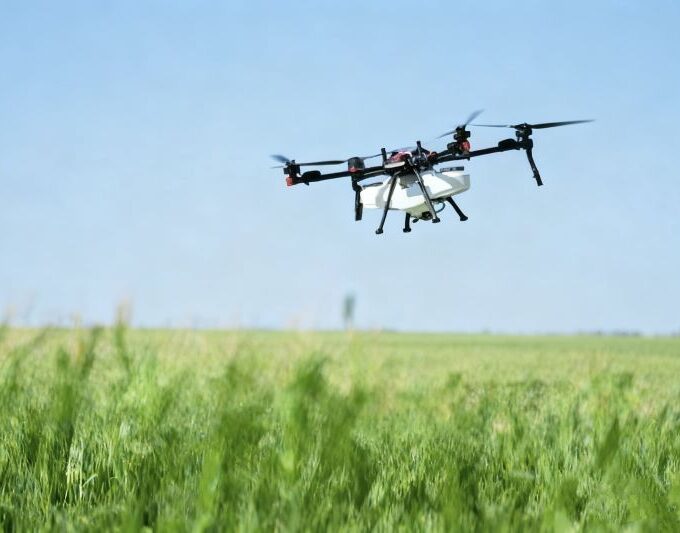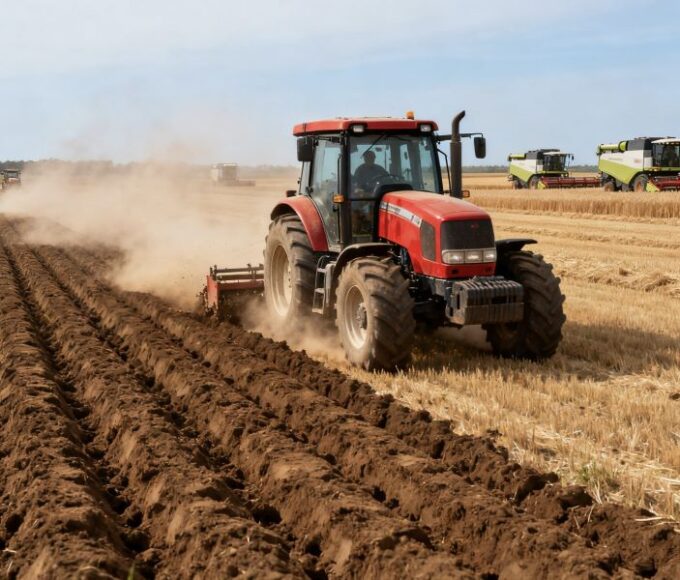Across the long arc of agricultural history, farmers have come to a key insight through generations of practice and careful observation: continuously planting the same crop on the same land causes the soil to “grow thinner”—its fertility steadily declines. In response, two ancient yet profoundly intelligent methods—crop rotation and intercropping—emerged as nature’s remedy, breathing new life into exhausted soil. These traditional techniques, refined through centuries of human experience, are now also recognized as foundational pillars in modern sustainable agriculture, offering science-backed strategies to restore, maintain, and enhance soil health.
Crop Rotation: a Periodic Regimen for Soil Rejuvenation
Crop rotation refers to the planned succession of different crops on the same land over time. This method is akin to creating a well-balanced “nutritional prescription” for the soil. Because different crops absorb and deplete nutrients in varying ways, rotating them helps restore equilibrium in soil fertility. For instance, cereal crops like maize have a high demand for nitrogen and can quickly deplete this nutrient if grown repeatedly. Conversely, legumes such as soybeans possess nitrogen-fixing bacteria in their root nodules, enabling them to capture atmospheric nitrogen and enrich the soil.
By rotating maize with legumes, farmers can efficiently balance nutrient cycles. After maize lowers the nitrogen level, legumes naturally replenish it, meeting their needs and creating reserves for subsequent crops. This cycle reduces the need for synthetic fertilizers, promotes long-term soil fertility, and supports more sustainable agricultural production.
Rotation also plays a critical role in pest and disease management. Each crop attracts specific pests and pathogens that thrive when their host is planted repeatedly. Continuous monoculture fosters an environment where such organisms accumulate, increasing disease outbreaks. For example, Phytophthora infestans, the pathogen causing late blight in potatoes, can overwinter in the soil. Repeatedly planting potatoes significantly raises the chances of infestation. Crop rotation interrupts these cycles, depriving pests of their hosts and disrupting their life histories, thereby reducing their populations naturally.
Moreover, crops differ in their root architecture and depth. Deep-rooted species like sugar beet loosen compact subsoils, enhancing water infiltration and aeration, while shallow-rooted crops such as wheat improve the upper soil layer. A rotational strategy that alternates such crops enables more efficient use of the entire soil profile, helping to prevent erosion and compaction, and ultimately improving the soil’s structure and water-holding capacity.
The United States Department of Agriculture (USDA) has conducted extensive studies confirming these benefits. In a landmark 10-year field experiment in the Midwest involving a rotation of corn, soybean, and wheat, researchers found a 15% increase in soil organic matter compared to continuous corn monoculture. Soil bulk density decreased, and porosity improved, facilitating better water and air flow—ideal conditions for robust root development.
Similar results have emerged from long-term trials in China. Research from China Agricultural University found that a wheat–maize–soybean rotation significantly increased populations of beneficial soil microorganisms, including actinomycetes and nitrogen-fixing bacteria, compared to continuous wheat planting. These microbes break down organic material, release nutrients, and boost plant growth. Additionally, rotations reduce soil-borne pathogens, decreasing the risk of disease outbreaks. A study published in Nature highlighted how diverse rotation systems reshape the structure and function of microbial communities, strengthening soil ecosystem services and their capacity to adapt to environmental changes.

Intercropping: Building Symbiotic Alliances Between Crops
Intercropping is the practice of growing two or more crop species simultaneously in the same field, typically those with overlapping or complementary growth cycles. This technique disrupts the uniformity of monocultures, fosters biodiversity, and creates mutualistic relationships between plants, which have far-reaching benefits for soil health and agroecological stability.
In terms of nutrient use, intercropping leverages complementarity among crops. For example, in orchard systems, Chinese milk vetch is often interplanted as a green manure crop. Its deep roots access phosphorus and potassium that lie beyond the reach of shallow-rooted trees. When incorporated back into the soil, its above-ground biomass contributes organic matter and improves soil structure. Additionally, the varying canopy heights of fruit trees and milk vetch form a layered spatial arrangement, providing shade that reduces evaporation and maintains consistent soil moisture, creating a microclimate that supports optimal tree growth.
Intercropping also strengthens the ecological stability of farmland. Different crops emit different biochemical exudates and exhibit varying growth patterns. Some species release compounds that suppress weed germination, reducing competition for nutrients and moisture. For instance, when soybeans are intercropped with corn, the soybean foliage shades the soil, impeding weed photosynthesis and slowing their development. Meanwhile, diverse cropping systems attract a wide range of beneficial organisms. The flowers of intercropped species serve as food sources for pollinators like bees, which not only enhance fruit and seed production but also assist in pest control by supporting populations of predatory insects, contributing to a healthy, self-regulating ecosystem.
Emerging research also shows that intercropping affects microbial dynamics through root exudate interactions. In systems involving maize and peas, flavonoids secreted by pea roots can trigger nodulation gene expression in rhizobia, enhancing nitrogen fixation. Meanwhile, carbohydrates released by maize roots nourish soil microbes, increasing microbial activity and reproduction. These biochemical interactions enhance the biological vitality of the soil. Scientific findings have demonstrated that rational intercropping systems significantly boost ecosystem resilience and productivity by cultivating a more active and diverse microbial population that supports efficient nutrient cycling and plant health.
Practical Guidelines for Implementing Rotation and Intercropping
While crop rotation and intercropping offer extensive ecological and economic benefits, they must be applied thoughtfully to achieve optimal outcomes. Choosing the right crop combinations is fundamental. This selection should consider botanical families, nutrient demands, growth cycles, and susceptibility to pests and diseases. Crops from the same family should generally not be rotated or intercropped, as they are often vulnerable to the same threats and may draw on similar nutrients.
It is equally important to adapt strategies to local conditions. Farmers must evaluate climate patterns, soil composition, and market trends to determine the most suitable crops and planting configurations. Successful rotation and intercropping systems integrate ecological knowledge with practical agricultural experience and economic realities.
Field management is another key factor. In intercropping, spatial layout is critical—crops should be arranged to minimize competition while maximizing light exposure, nutrient absorption, and water use efficiency. In crop rotation systems, fertilization and irrigation must be tailored to the needs of each crop. Chemical fertilizers should be used sparingly, while organic matter and biological inputs such as compost and microbial inoculants are emphasized to stimulate soil life and long-term fertility.
Encouragingly, innovation in agriculture is yielding new forms of intercropping and rotational systems. One notable example is the “rice–fish–duck” integrated farming system. In this model, fish and ducks are raised within rice paddies. Their movement helps aerate and loosen the soil, and their waste provides organic nutrients for rice plants. In addition, both fish and ducks feed on weeds and pests, drastically reducing the need for herbicides and pesticides. This three-tiered system not only maximizes land use but also enhances soil health and biodiversity. The Consultative Group on International Agricultural Research (CGIAR) has recognized and promoted such integrated models as part of its global effort to advance sustainable farming practices.

a Choreographed Agricultural Symphony
Crop rotation and intercropping can be viewed as an elegant ecological symphony—carefully choreographed interactions among plant species that breathe life into the soil and safeguard its long-term vitality. These ancient methods, rooted in observation and refined by science, have proven time and again to be vital for building resilient, productive agricultural systems.
In today’s context of global environmental change and growing food demand, their relevance is stronger than ever. They provide a roadmap not just for soil restoration, but for holistic agricultural regeneration—helping ensure food security, ecological balance, and sustainable livelihoods.
As scientific research continues to deepen our understanding of soil-plant-microbe interactions, and as precision agriculture tools enable better system design and monitoring, crop rotation and intercropping will continue to evolve. These time-honored strategies will remain at the forefront of efforts to cultivate thriving soils, resilient ecosystems, and a more sustainable future for global agriculture.












